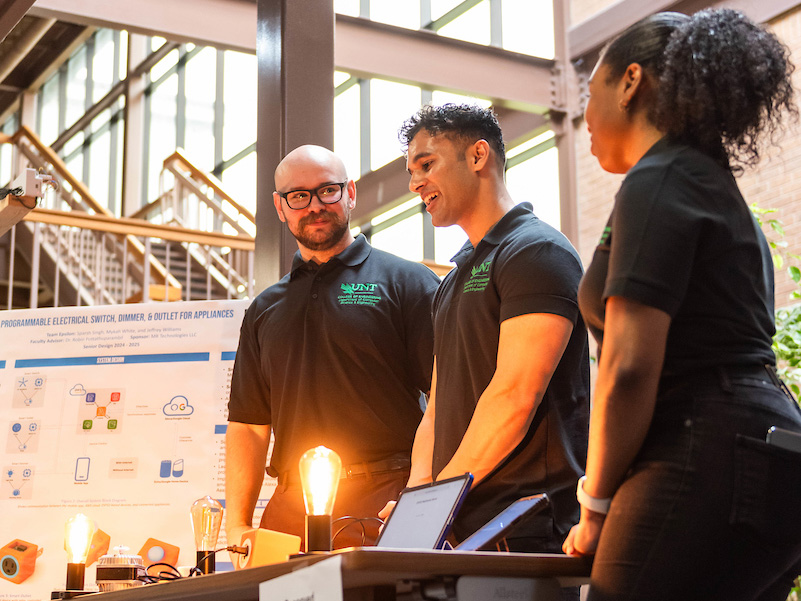
DENTON (UNT), Texas — Senior engineering students at the University of North Texas showcased the culmination of their undergraduate studies at the Research and Design (R&D) Expo @ UNT, an annual event that highlights innovation across disciplines. From medical devices and robotics to sustainable design and educational games — even a pancake-flipping robot — the projects reflected both creativity and real-world impact.
“The Expo is always an exciting time for our college,” said Paul Krueger, dean of the College of Engineering. “It’s a showcase of the innovative drive and talent of our undergraduate and graduate students. From health care solutions to sustainability, our students are ready to change the industry and improve everyday lives.”
Biomedical Engineering
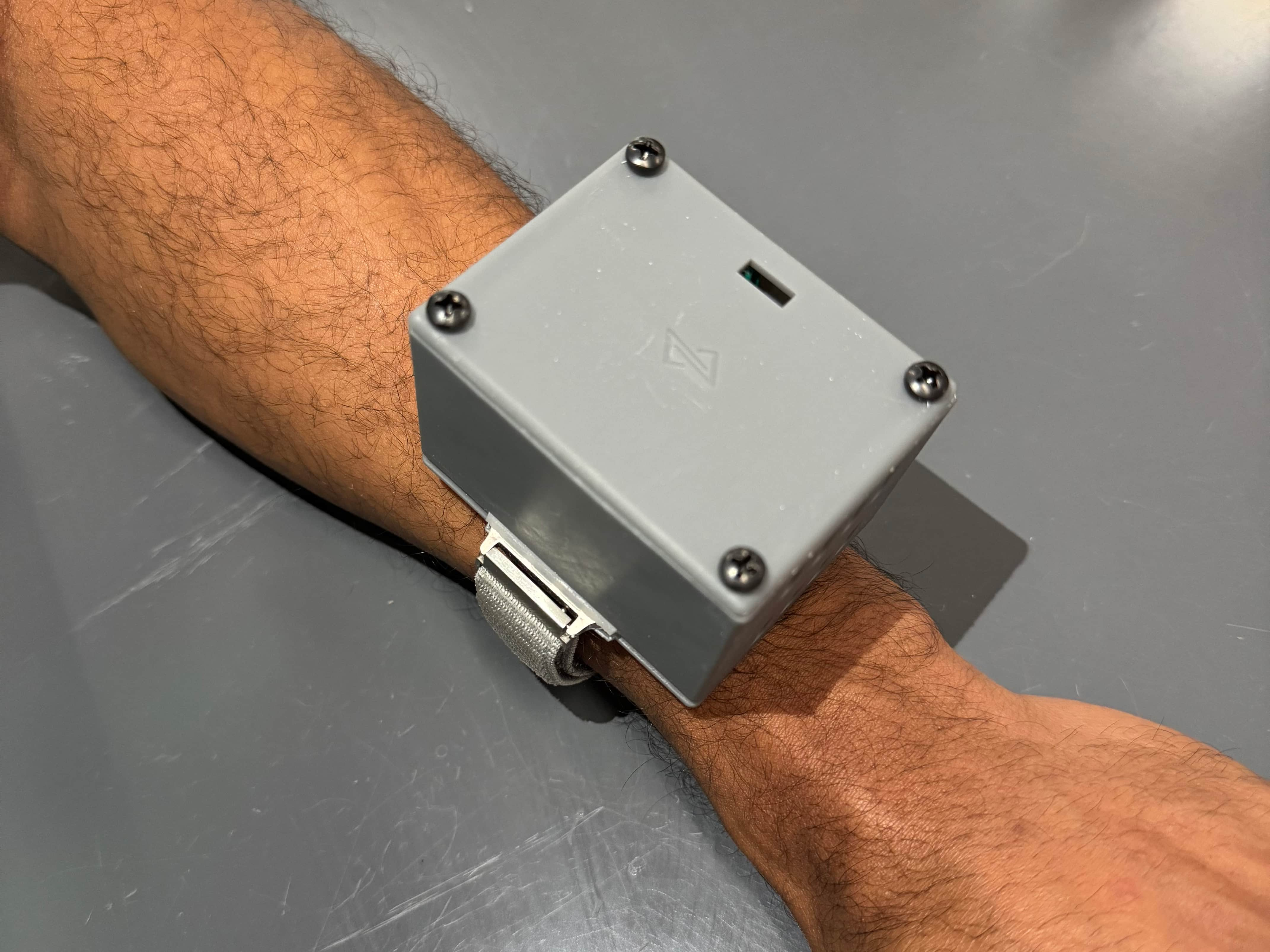
Chloe Nguyen, a senior in biomedical engineering, drew from personal experience to develop a wearable sensor that tracks skin hydration levels to help people manage eczema. Nguyen founded the startup ZemaLink in fall 2024 and recruited classmates Marc Anthony Torres, Ryan Ghandour and Praises Ogunbanwo to bring the concept to life for the Expo.
“This all started as a passion project for me,” said Nguyen, who has dealt with severe eczema throughout her life.
The device, worn like a watch, alerts users through a web app when their skin’s hydration dips below a certain level — reminding them to reapply ointment before a flare-up occurs. The data in the app would also be shared with the patient’s dermatologist to help create a more personalized treatment plan.
The team received support from Plano-based biomedical engineering consulting firm The RealTime Group. Nguyen also recently received $5,000 as a finalist in the iUNT Pitch Competition, a campuswide contest that helps student entrepreneurs develop and fund their business ideas.
Computer Science and Engineering
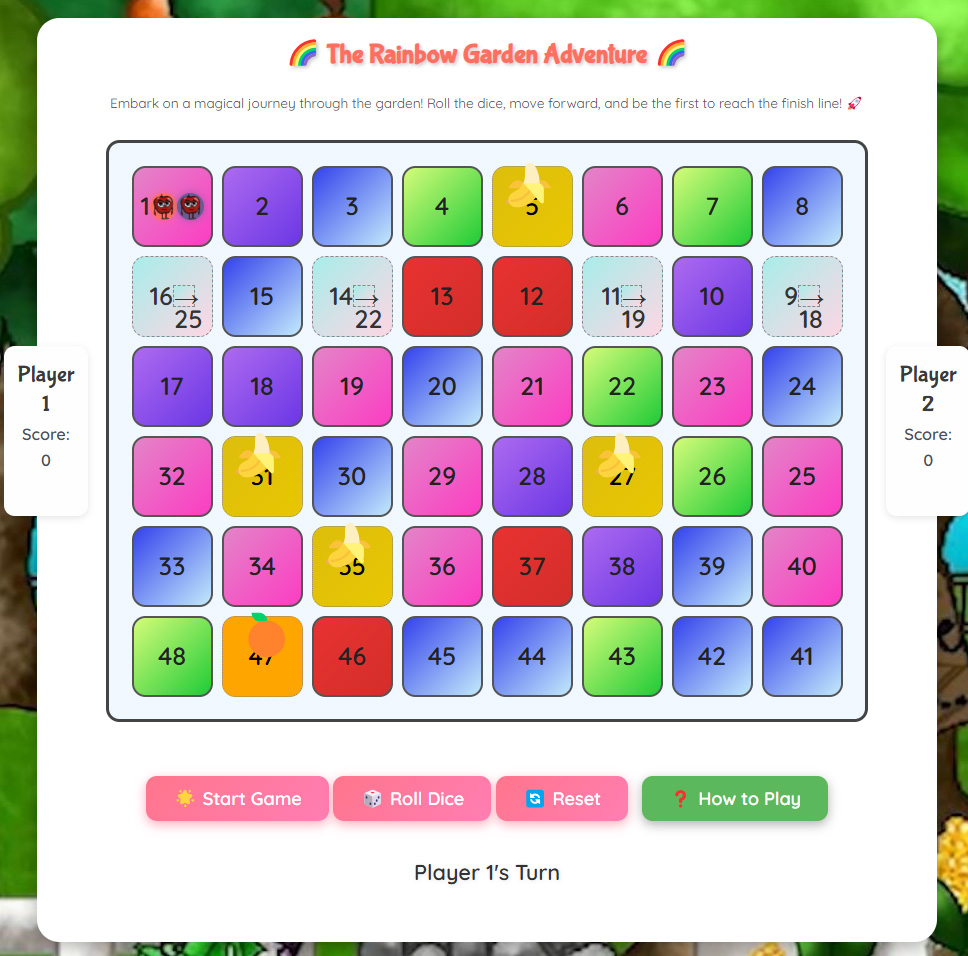
In computer science and engineering, students wrapped up a five-year collaboration with the Texas nonprofit Eat Like the Rainbow by launching an online board game that teaches children about nutrition. Players roll dice, answer trivia questions and avoid traps while exploring a randomized digital board.
“The main goal is to get kids to eat healthy, and that’s always a good thing to work toward,” said team member Luis Reyes.
The team — Reyes, Ahmad Roussan, Sanjay Chauduary and Samixa Rajopadhyaya — overcame challenges integrating the game with the nonprofit’s content management system. They also figured out how to program the game to randomly generate a new winnable board with each play. The team is planning to add extra features, including a trivia test results page, soon.
Electrical Engineering
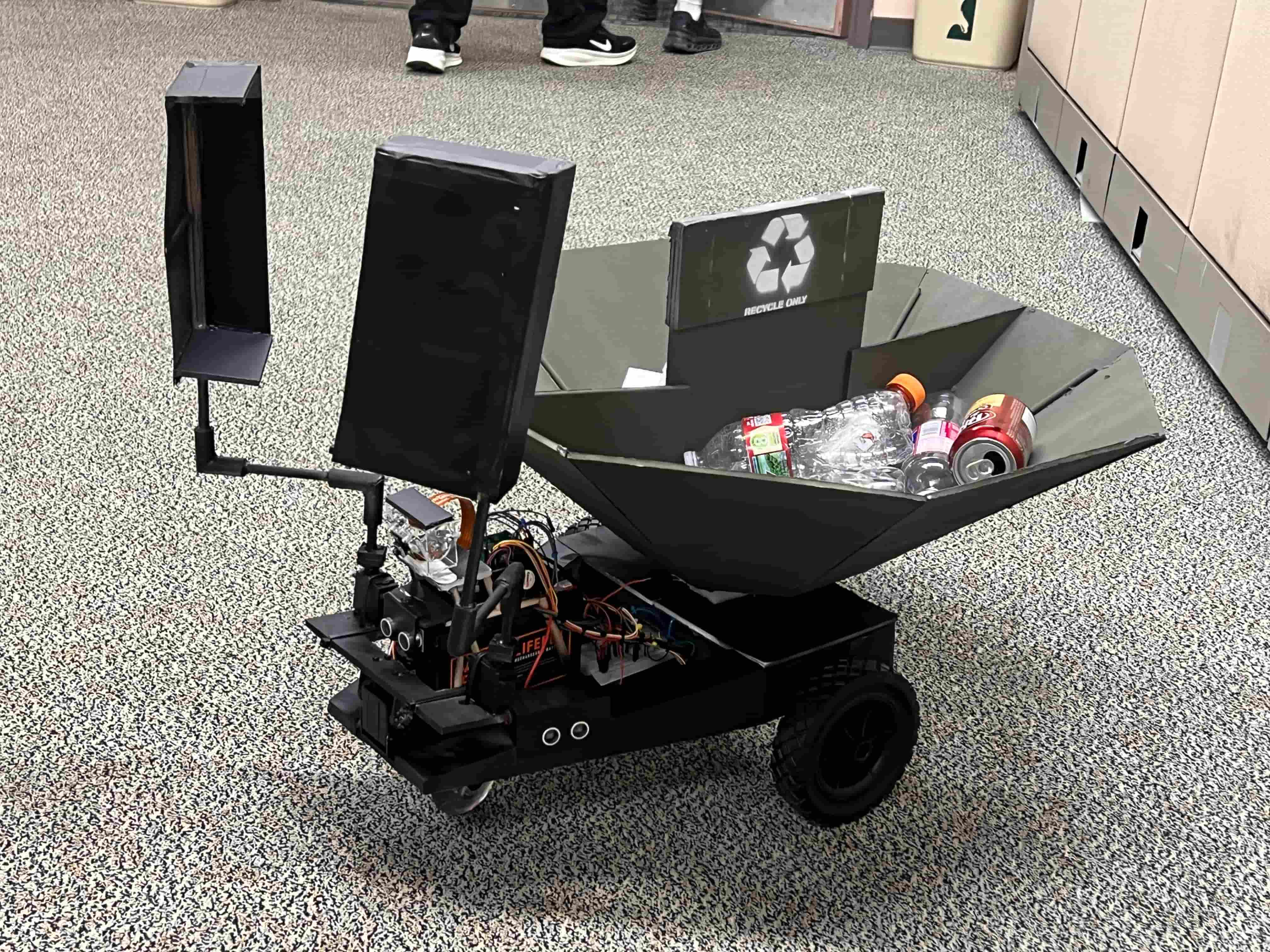
According to the Texas Department of Transportation, approximately 362 million pieces of litter accumulate on Texas roads every year — a problem that takes both manpower and taxpayer money to address. Hoping to make cleanup more efficient, a team of electrical engineering students developed the Trash Identification and Disposal (TI-D) Robot, which uses image recognition and dual-arm mechanics to identify, classify and sort trash into recycling or waste.
“There are a lot of calculations behind that one motion,” said Jude Abunabaa, who developed the robot with Austen Guerrero, David Pemberton and Jean Hobson. “The most rewarding part for me was just seeing it pick up that first piece of trash.”
Equipped with sensors to avoid obstacles and ledges, the robot is designed for public spaces like parks and trails. The team envisions it operating overnight to clean busy areas without disrupting visitors.
Materials Science and Engineering
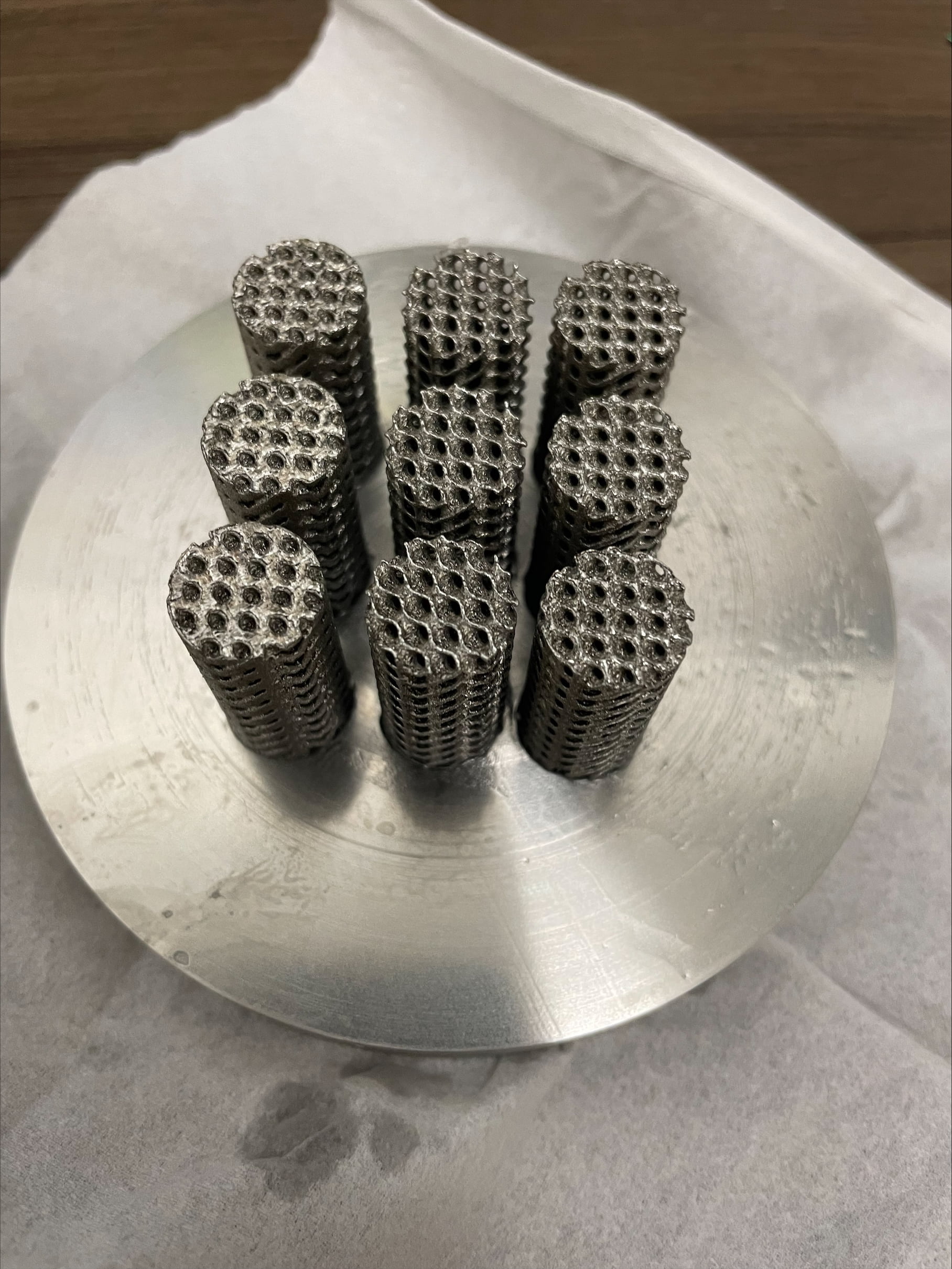
A team from the Department of Materials Science and Engineering focused on improving bone implants with a radially graded stainless steel lattice. The design allows bone cells to grow throughout the lattice which could increase implant integration.
“Sometimes bones won’t take to a solid implant, so that’s why lattices are being explored now,” said team member Jacob Spencer, who worked alongside Magdalena Cruz and Wesley Miller.
The team aimed to see if stainless steel could match the stiffness of bone to reduce stress on the implant. They tested different densities by making the lattice more compact or more open. They said the most challenging part was the printing process — each piece took up to six hours because layers were just a 30th of a millimeter thick.
“We actually got a significantly closer stiffness to bone than current implants, so we’re really proud of the work we’ve done,” Spencer said.
With extra time after finding their ideal density early on, the team also experimented with coating samples in bone minerals to enhance biocompatibility. The coating was for theoretical testing, and the team stresses their main goal was to find the proper density to assist future research. Miller and Spencer hope to continue the project through the summer and write a formal paper.
Mechanical Engineering
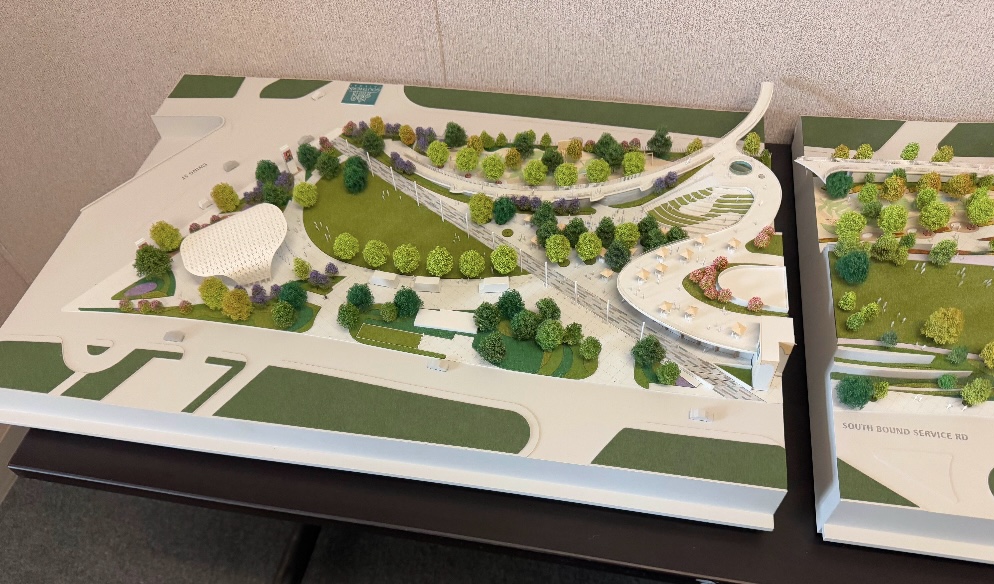
This year marked the first time multiple teams in the construction management program participated in the Expo. Nine teams — 36 students total — partnered with construction companies on North Texas projects, including work for UNT, Frisco Independent School District and a new community in Venus, Texas.
Team Peach Tree, made up of Juan Guido, Francisco Martinez, Jada Ramirez and Esmeralda Rivera, worked with McCarthy Building Companies on the Southern Gateway Park in Dallas, a bridge park being built over I-35E to reconnect the historic Oak Cliff neighborhood, which was separated by highway construction.
“There are maybe a handful of bridge parks in the country,” Guido said. “They’re relatively new, especially to Texas.”
The students developed materials plans, schedules and budgets, submitting their work to McCarthy for feedback and visiting the job site for hands-on insight.
“My favorite part was the tours,” Ramirez said. “You get to talk to people on-site and better understand how to apply what we’ve learned.”
Showcasing Ideas
In addition to senior design projects, this year’s event featured the debut of a research poster competition open to both undergraduate and graduate students. Some teams participated in both, including seniors Joshua Ennis and Tristan King, who developed a system to support post-quantum cryptography.
“We’re really proud of our project,” Ennis said. “It’s good experience to present our research to people from different fields and with varying levels of knowledge about our topic.”
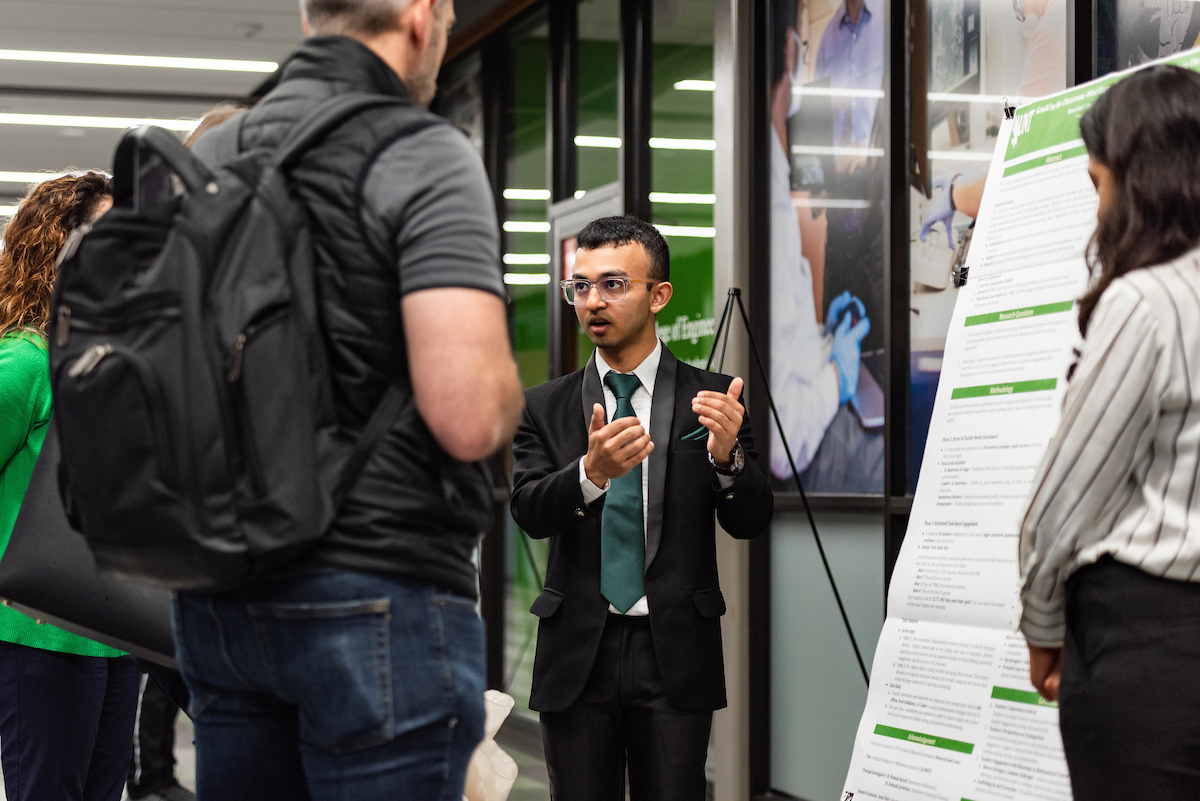
Computer science graduate student Rena Patel also competed, with team member undergradaute student Divya Darji, with a project analyzing how math teachers perceive and respond to artificial intelligence in the classroom.
“As more students use AI for their assignments, we think it’s important to gather more insight on how teachers feel about AI and how they could use it for learning,” Patel said. “If they gain more knowledge and training for AI tools that are better suited to math learning, they can guide their students towards those.”
Across two days, nearly 30 participants presented research from departments across the College of Engineering, demonstrating UNT’s focus on innovation, hands-on learning and cross-disciplinary collaboration.